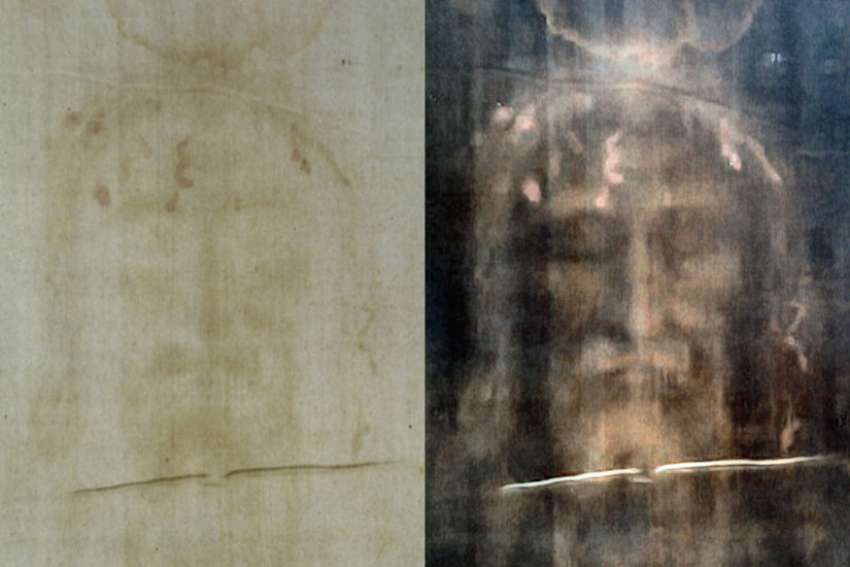Very small particles attached to the linen fibers of the shroud “have recorded a scenario of great suffering, whose victim was wrapped up in the funeral cloth,” said Elvio Carlino, a researcher at the Institute of Crystallography.
These particles, called “nanoparticles,” had a “peculiar structure, size and distribution,” said University of Padua professor Giulio Fanti.
And the nanoparticles are not typical of the blood of a healthy person. Rather, they show high levels of substances called creatinine and ferritin, found in patients who suffer forceful multiple traumas like torture.
“Hence, the presence of these biological nanoparticles found during our experiments point to a violent death for the man wrapped in the Turin Shroud,” Fanti said.
The shroud’s latest researchers published their findings and measurements in the U.S. open-access peer-reviewed journal PlosOne, in an article titled “New Biological Evidence from Atomic Resolution Studies on the Turin Shroud,” the Turin-based newspaper La Stampa’s Vatican Insider reports.
The findings contradict claims that the shroud is a painted object – claims which are common among those who suggest it is a medieval forgery. The characteristics of these particles “cannot be artifacts made over the centuries on the fabric of the Shroud,” Fanti said.
Among the most well-known relics believed to be connected with Jesus Christ’s Passion, the Shroud of Turin has been venerated for centuries by Christians as the burial shroud of Jesus. It has been subject to intense scientific study to ascertain its authenticity, and the origins of the image.
Appearing on the 14-foot long, three-and-a-half foot wide cloth a faintly stained postmortem image of a man – front and back – who has been brutally tortured and crucified. The image becomes clear in a haunting photo negative.
The study of particles took place on the nanoscale – ranging from one to 100 nanometers. A nanometer is one billionth the length of a meter.
“These findings could only be revealed by the methods recently developed in the field of electron microscopy,” said Carlino. He said the research marked the first study of “the nanoscale properties of a pristine fiber taken from the Turin Shroud.”
Researchers drew on experimental evidence of atomic resolution studies and recent medical studies on patients who suffered multiple acts of trauma and torture.
The research was carried out by the Instituo Officia dei Materiali in Trieste and the Institute of Crystallography in Bari, both under Italy’s National Research Council, as well as the University of Padua’s Department of Industrial Engineering.
Vatican Insider said the research confirms the hypotheses of previous investigations, like that of biochemist Alan Adler in the 1990s.
The Catholic Church has not taken an official position on the relic’s authenticity. The shroud is presently housed at Turin’s St. John the Baptist Cathedral. During his June 21, 2015 visit to the cathedral, Pope Francis prayed before it.
“The Shroud attracts (us) toward the martyred face and body of Jesus,” he said in a noontime Angelus address at a Turin plaza. “At the same time, it pushes (us) toward the face of every suffering and unjustly persecuted person. It pushes us in the same direction as the gift of Jesus’ love.”


